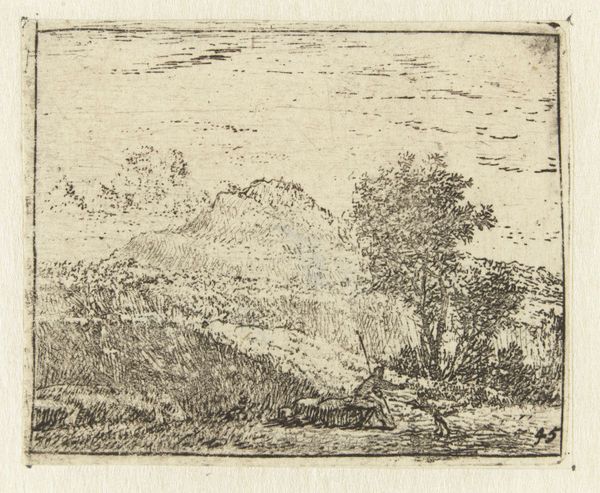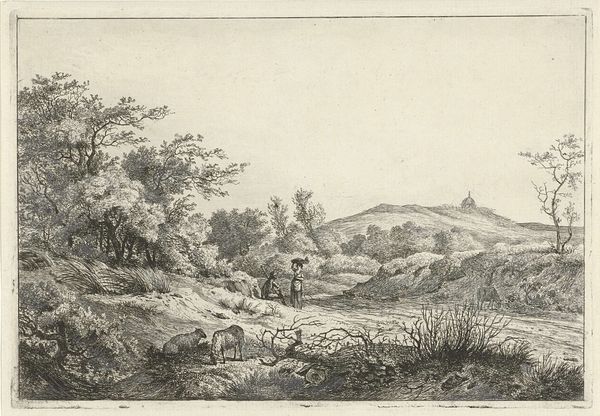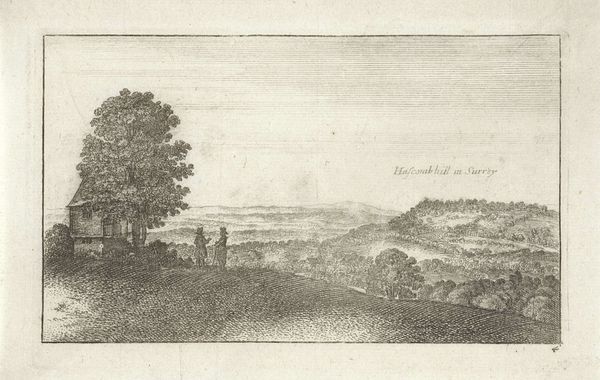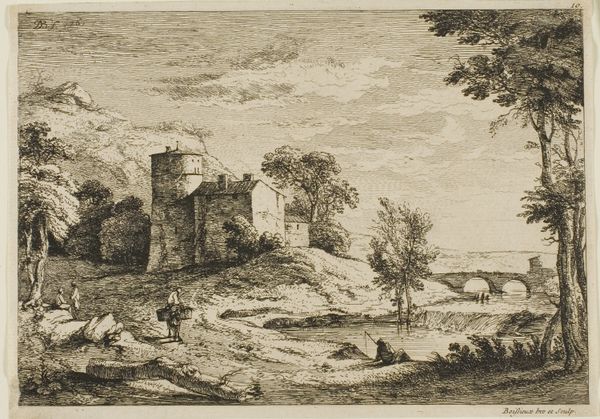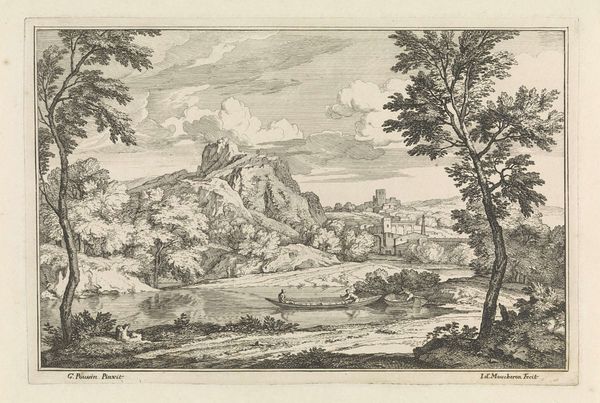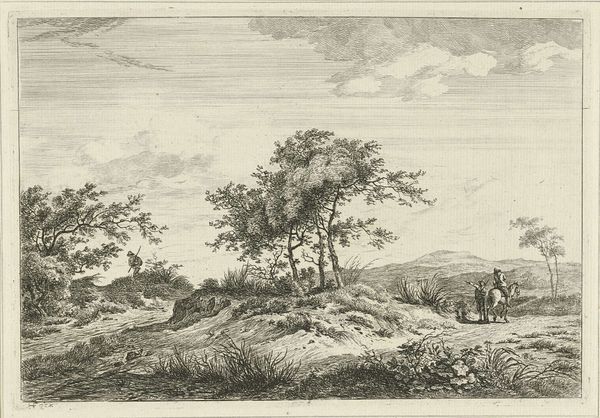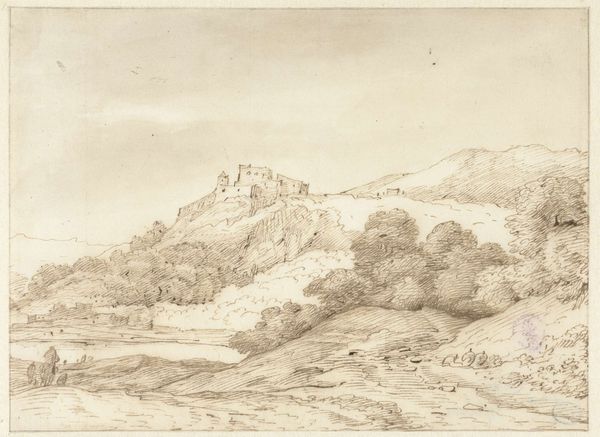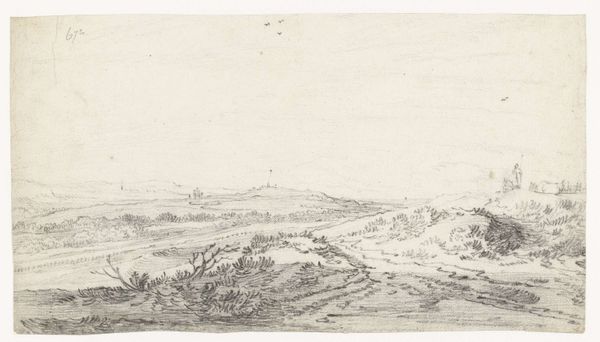
drawing, print, etching, engraving
#
drawing
# print
#
etching
#
landscape
#
etching
#
form
#
romanticism
#
mountain
#
line
#
cityscape
#
engraving
Dimensions: height 123 mm, width 195 mm
Copyright: Rijks Museum: Open Domain
Editor: This is Willem van Dielen's "Mountain Landscape with Castle on a Mountaintop," an etching and engraving made sometime between 1815 and 1867. There’s such a stark contrast between the quiet forest in the foreground and the imposing castle in the distance. What’s your read on this piece? Curator: I see a visual representation of power dynamics inherent in landscape and architecture. Consider the way the castle, perched precariously, dominates the implied cityscape. Who benefits from that control? The lines almost seem to be pushing down upon the trees below and what appears to be travelers. What's the story of their labor? Editor: I hadn't thought of it like that! I was focused on the Romantic aesthetic, this sort of sublime, untouched nature contrasting with the man-made castle. Curator: And the "untouched nature" you see? How might the idea of wilderness itself be a constructed ideal, influenced by social power and excluding certain narratives of labor and land use? Perhaps look at it through a postcolonial lens: How might this idealized landscape erase indigenous presences? The etching, like many landscapes, subtly reinforces particular ideologies. What are your thoughts? Editor: I suppose I see what you mean. The clean lines and defined space imply a controlled, perhaps even surveilled, environment. Like the trees exist because the castle allows them to. The power seems centered on that mountaintop and projects outwards, into the natural world. Curator: Precisely. Even in its beauty, we can identify visual language that speaks to themes of control and order. Remember, no art exists in a vacuum. Editor: That's really insightful. I’ll definitely look at landscapes differently from now on, especially with regard to class and politics. Curator: Glad to offer a new perspective. Keep asking questions; the best art interpretation arises from challenging assumptions.
Comments
No comments
Be the first to comment and join the conversation on the ultimate creative platform.

